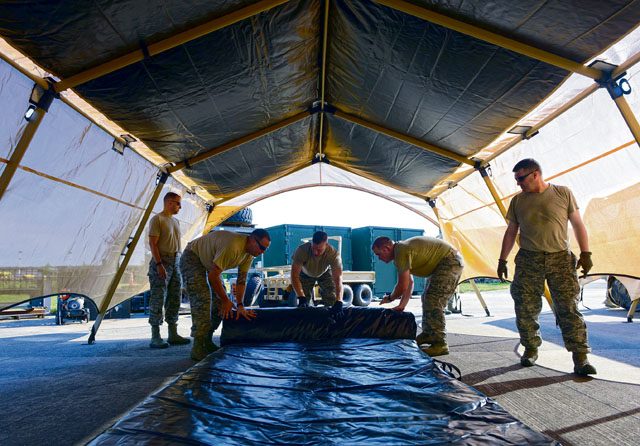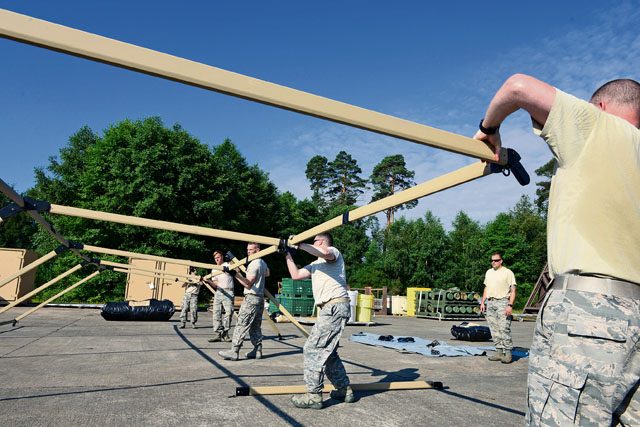
Airmen with the 435th Contingency Response Group conducted training on a new tent model July 18 on Ramstein.
Noncommisioned officers with the 435 CRG taught the Airmen how to assemble and disassemble the Tent Model 60.
“We’ve moved from the Alaskan Small Shelter System to (TM60) tents in order for us to be able to be more mobile and also to have a shorter setup and teardown time,” said Capt. William D. Calkins, 435 CRG bare base flight commander. “We and the (435th) Contingency Response Squadron are tasked to be as mobile as possible, and we’re really charged to take our own stuff with us.”
The Airmen were first taught how to set up and dismantle the tents through step-by-step, hands-on instruction, then they repeated the process with minimum assistance from the training leader.
For the third cycle, the Airmen were timed as they built the tent and broke it down.
Staff Sgt. Alexei Nikitin, 435th Contingency Response Squadron contingency engineer craftsman, explained that though the system was new to the Airmen, they learned quickly and were able to get the job done.
“After seeing their second setup and teardown of the tent, I’m overjoyed that their (teamwork) and work ethic has pulled them together,” Nikitin said.
Nikitin was not only pleased with his team’s work but also with the increased efficiency and durability the new tents provide over the previous model they used.
“We get much more pallet space whenever we load it on a C-130 (Hercules) or C-17 (Globemaster),” Nikitin said. “They don’t break as easy.”
The 435 CRG previously used another brand of tent called Deployable Rapid Assembly Shelter. Though the system was easy to use, the 435 CRG sought a more reliable system.
This prompted them to turn to the TM60 tents.
“So far we’ve seen a lot of good results just for the reliability and robustness of it,” Calkins said. “It seems as though we should be able to get the setup and teardown time improved by at least 50 percent to what I’ve seen so far.”
Although the tents are different from what his unit is used to, Calkins expressed confidence that the 435 CRG will adapt quickly and use them proficiently.
“It is a new system, so of course the biggest thing is just getting everybody trained up on it,” Calkins said. “But I think once this becomes the new norm, we’ll see a lot of improvement as we go.”
As the 435 CRG brings in the new system, both Calkins and Nikitin are confident it will help their organization continue to mobilize rapidly and efficiently to whatever mission they respond to.



